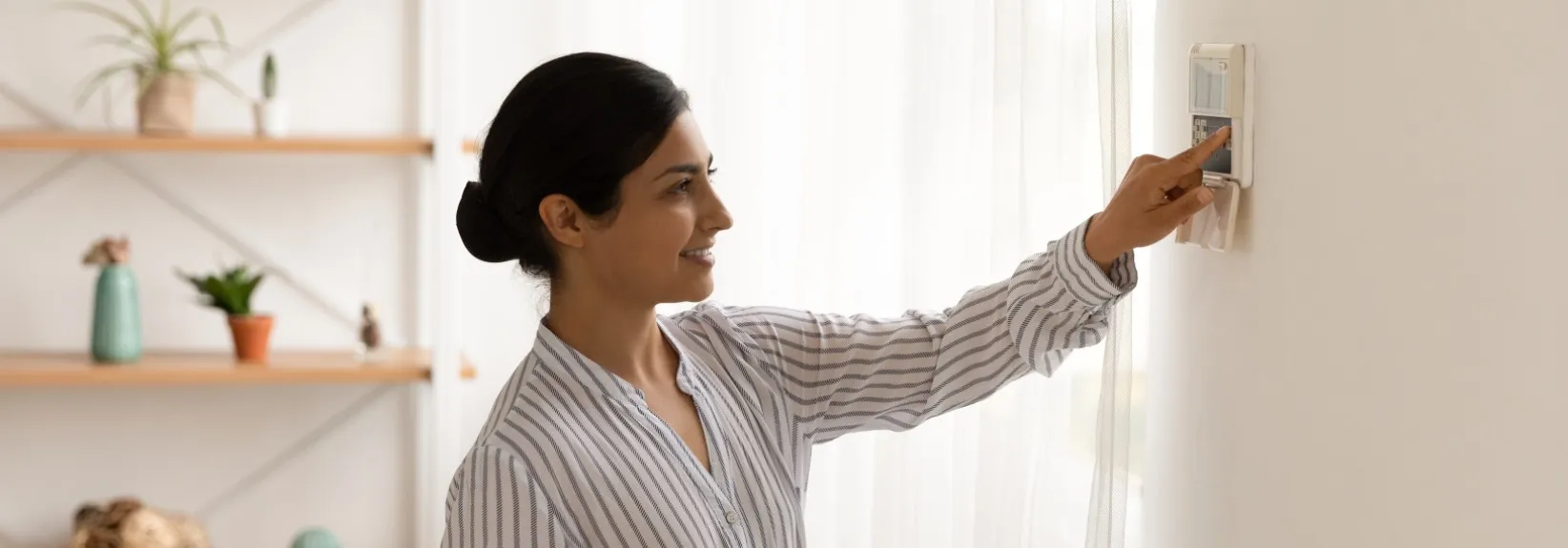How Should I Set My Thermostat for When I’m At Work?
For several hours a day you’re gone at work, or maybe at school. Yet your comfort system keeps working, with nobody home. This uses up a ton of energy and costs you money. You can considerably scale back this cost by setting the thermostat up or down when you leave for work and resetting it back to your desired temperature when you return home. But how much should the thermostat be adjusted?
Here’s what the Department of Energy suggests about thermostat settings:
You can save as much as 10% a year on HVAC costs by just turning your thermostat down 7°-10°F for eight hours a day rather than its normal setting. The percentage of savings from setback is greater for buildings in cooler climates than for those in more dynamic climates.
The tinier the contrast between the both temperatures, the lower your total cooling bill can be. You can comfortably save energy through the winter by setting the thermostat to something like 68°F while you’re awake and turning it lower while you’re sleeping or away from home. For summer, you can use the same approach with central air conditioning by leaving your house warmer than normal when you are gone and setting the thermostat to a setting as high as you can manage comfortably when you’re home and want cooling and to ensure humidity control if needed.
You could have been advised that making these adjustments won’t be worth the time because your comfort system has to work even harder to return to your favored temperature, reversing your savings, but the energy department suggests this isn’t true, namely for heaters: “A common misconception associated with thermostats is that a furnace works harder than normal to warm the space back to a comfortable temperature after the thermostat has been set back, resulting in little or no savings. In fact, as soon as your house drops below its normal temperature, it will lose energy to the surrounding environment more slowly.”
Programmable and Smart Thermostats
Regardless of the benefits of changing your thermostat every time you leave for work, it’s not hard to forget in the rush of getting ready and on your way. This is one benefit of programmable and smart thermostats. You can direct your thermostat to automatically shift to another temperature across your standard work hours. And with a smart thermostat, you can adjust the temperature (or the programming schedule) from anywhere. This is particularly helpful if you’ve neglected to adjust the setting before going on vacation.Don’t Forget the Pets
If you have a pet, think about their comfort too. Cats and dogs with dense fur won’t be as happy with high temperatures. And pets with less dense fur won’t always be happy with cold temperatures. The same applies to tropical birds, fish and reptiles. Considering temperature preferences differ widely by breed and species, so review them for your pets.Other Advantages of Changing Your Thermostat for When You’re Away
-
- Carbon emissions – The harder you run your heating and cooling, the more carbon emissions you generate. Saving energy decreases air pollution and greenhouse gasses.
-
- HVAC Longevity – Demanding too much from your HVAC unit can cut its life span and cause increased maintenance to be needed. It also means the air filter may clog up more quickly, making your indoor air supply worse.
